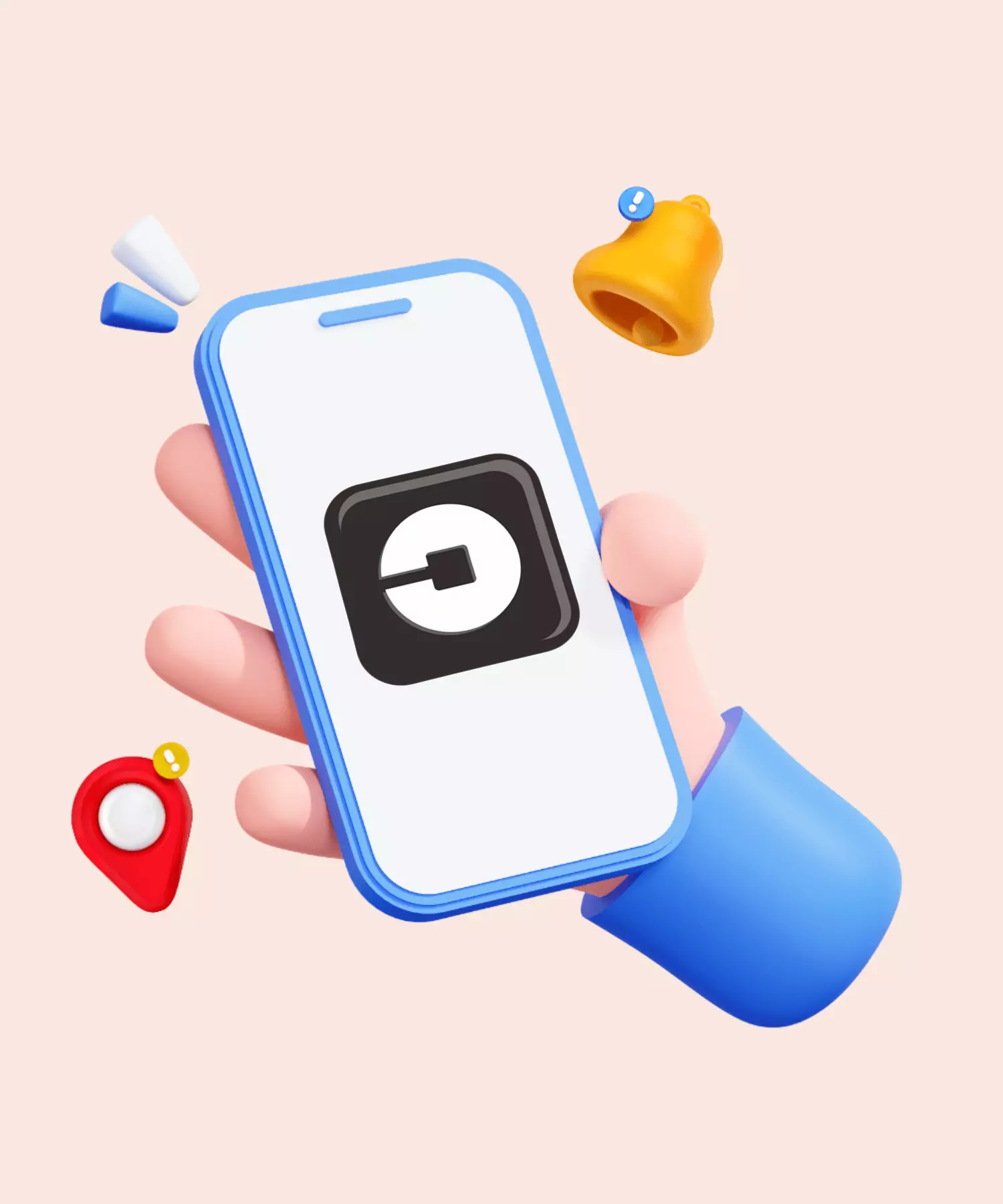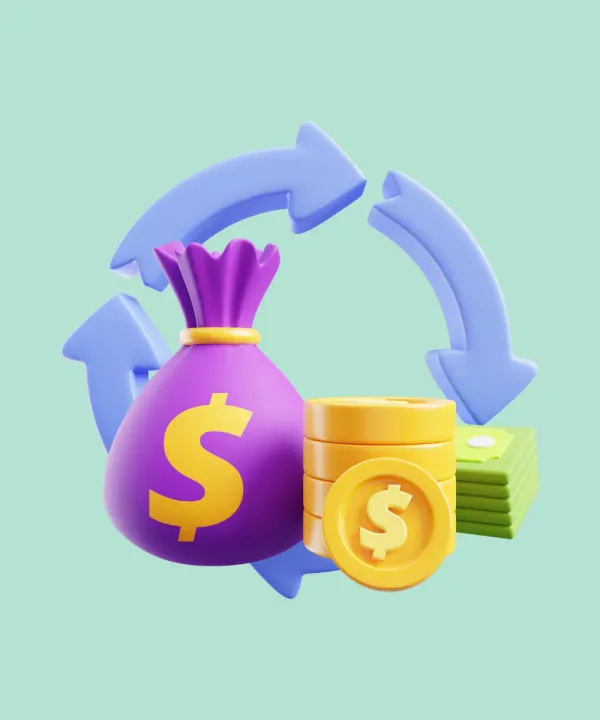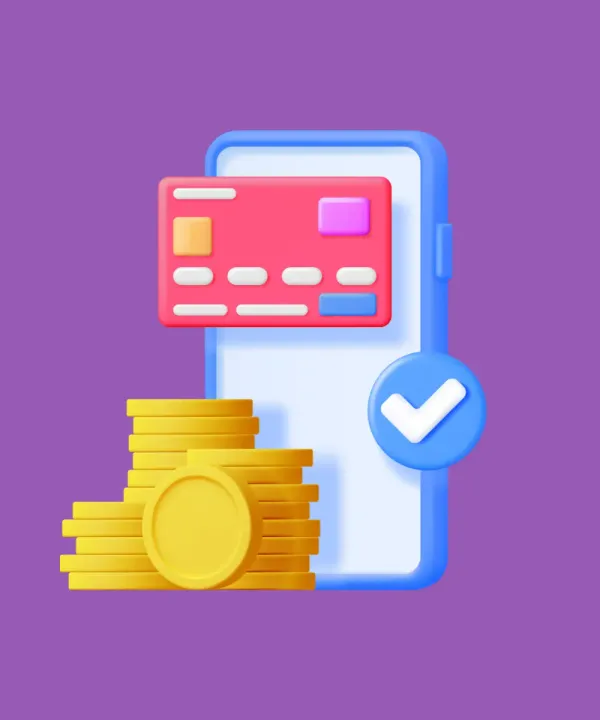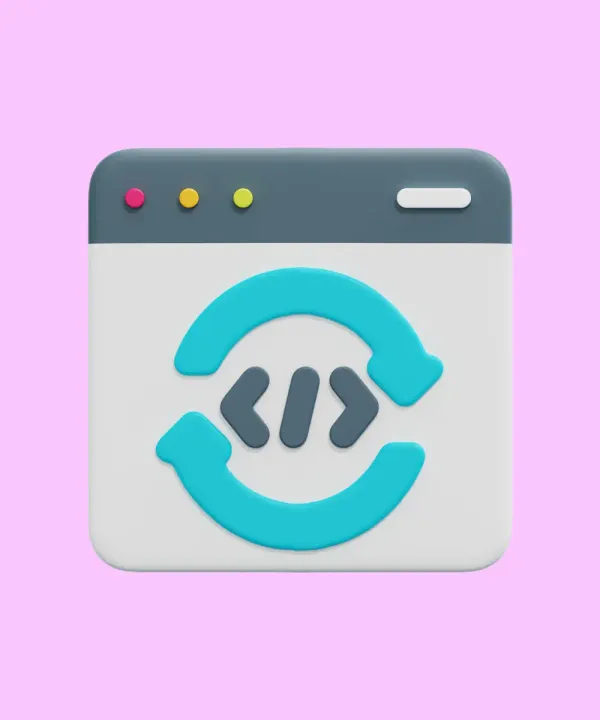In today's fast-paced world, the need for instant gratification has never been more pronounced. As digital transformation sweeps across industries, the on-demand economy is emerging as a dominant force, reshaping how businesses operate and consumers interact with services. This shift is not just a fleeting trend; it's a fundamental change in consumer behavior and expectations.
According to Statista, the global on-demand economy is projected to reach a staggering $335 billion by 2025. This isn't just a testament to the popularity of a few apps but indicates a broader market shift. From food delivery and ride-sharing to professional services and healthcare, the on-demand model is permeating various sectors. While the market's potential is vast, it's also fiercely competitive. New startups are sprouting up daily, each aiming to be the next Uber or Airbnb. Established businesses are not far behind, with many pivoting their models to incorporate on-demand elements.
The on-demand economy's growth is not just a result of technological advancements but a confluence of various factors, from changing consumer behavior to economic implications. As we delve deeper into the intricacies of on-demand app development, understanding this market landscape will be crucial for businesses aiming to make a mark.
Understanding On-demand App Development
On-demand app development is at the forefront of the digital revolution, reshaping industries and redefining consumer expectations. But what exactly does it entail, and why has it become such a pivotal aspect of the modern business landscape?
On-demand app development refers to the creation of digital platforms designed to meet immediate consumer needs. These platforms act as intermediaries, connecting users with specific services or products in real-time. The primary goal is to provide instant gratification, eliminating traditional waiting times and streamlining access.
Characteristics of on-demand apps
On-demand apps are not just regular mobile applications. They possess distinct characteristics that set them apart:
- Instant services: The core essence of these apps is to provide services or products almost instantly. Whether it's a ride or a meal, users expect quick responses and timely deliveries.
- Geo-tracking: One of the most significant features, geo-tracking allows users to track their service in real-time, be it a delivery rider or a cab. This not only enhances transparency but also builds trust.
- Payment integration: These apps come with integrated payment systems, allowing users to pay for services or products directly within the app. This seamless transaction process enhances user experience and ensures smooth operations.
- Dynamic pricing: Many on-demand apps use dynamic pricing models, where prices can vary based on demand, time, or other factors. This helps in optimizing revenue and managing demand effectively.
- Feedback mechanism: User feedback is crucial. On-demand apps often have a built-in system for ratings and reviews, allowing users to share their experiences and service providers to improve.
Iconic examples of on-demand apps
The on-demand economy has given birth to some of the most transformative businesses of our times. Here's a closer look at a few:
- Uber: This ride-hailing app disrupted the taxi industry by connecting drivers with riders directly. It introduced a new level of convenience, allowing users to book rides instantly, track their journey in real-time, and pay seamlessly through the app.

- DoorDash: Catering to the urban population's craving for quick and diverse food options, DoorDash emerged as a leading food delivery service. It partners with a wide range of restaurants and employs gig workers to deliver meals promptly to users' doorsteps.
- Airbnb: Challenging the conventional hotel industry, Airbnb created a platform where individuals could rent out their homes or rooms to travelers. This peer-to-peer model offers unique accommodation experiences and allows homeowners to earn from their unused spaces.
- Instacart: Recognizing the need for convenience in grocery shopping, Instacart connects users with personal shoppers who pick and deliver groceries from their chosen stores. This model eliminates the need for users to visit stores, saving them time and effort.
- Netflix: A pioneer in the on-demand streaming space, Netflix transformed the entertainment industry. It provides users with instant access to a vast library of movies, TV shows, and original content, allowing them to watch their favorite content anytime, anywhere.
Types of On-demand Apps
The on-demand economy has permeated various sectors, leading to the emergence of diverse app categories. Each type addresses specific consumer needs, offering tailored solutions that redefine traditional business models. Let's delve deeper into the primary categories of on-demand apps.
| Type of On-demand App | Description | Examples |
|---|---|---|
| Service-based | Apps that connect users with professionals who provide specific services. This can range from personal care to home maintenance. | Uber, Handy, UrbanClap |
| Product-based | Apps focused on delivering products to users, ranging from food to retail items. | DoorDash, Instacart, Amazon Prime Now |
| Rental-based | Platforms that allow users to rent items for a specific duration, eliminating the need for outright purchase. | Airbnb, Turo, Rent the Runway |
| Peer-to-peer Services | Apps that facilitate transactions between individuals, bypassing traditional intermediaries. They can encompass a range of services or product exchanges. | TaskRabbit, Poshmark, Vinted |
Benefits of On-demand Apps for Businesses
The on-demand economy has not only reshaped consumer behavior but has also brought about transformative benefits for businesses. Here are some of the key benefits, backed by data and real-world examples:
- Access to a larger customer base: On-demand apps eliminate geographical barriers. For instance, Uber operates in over 900 metropolitan areas worldwide, showcasing the vast reach of on-demand platforms.
- Real-time data & insights: Apps like DoorDash provide restaurants with data on popular dishes, peak order times, and customer preferences. This data-driven approach has helped many restaurants optimize their menus and operations.
- Increased operational efficiency: According to Grand View Research article, on-demand platforms can lead to a 20% reduction in execution time for specific business tasks.
- Enhanced customer engagement: Starbucks' on-demand mobile ordering system accounts for over 13% of its transactions in the U.S., highlighting the power of on-demand apps to drive customer engagement and sales.
- Flexible business models: Movie streaming service Netflix transitioned from a DVD rental model to an on-demand streaming model, resulting in a subscriber base of over 200 million by the end of 2020.
- Direct channel for marketing & promotions: Apps like Instacart offer promotional spaces for brands, leading to a 10-20% increase in sales for those that advertise on the platform.
- Reduced overheads: By shifting to an on-demand model, companies like Airbnb have avoided the overheads associated with traditional business models. Airbnb, without owning any property, achieved a valuation comparable to established hotel chains.
- Scalability: Dropbox, an on-demand cloud storage service, grew its user base from 100,000 to 4 million in just 15 months, showcasing the rapid scalability of on-demand platforms.
Challenges in On-demand App Development
The allure of the on-demand economy is undeniable, but businesses venturing into this domain face a myriad of challenges. Here's a data-backed exploration of the hurdles companies encounter when developing on-demand apps:
- Market saturation: The app marketplaces, like Google Play Store and Apple App Store, are crowded. As of the third quarter of 2022, Statista reported over 3.55 million apps on the Google Play Store and approximately 1.6 million apps on the Apple App Store. This dense landscape means new on-demand apps must fight for visibility and user attention.
- High user expectations: Today's consumers demand flawless experiences. A PwC survey highlighted that 32% of customers would abandon a brand they love after just one bad experience. For on-demand apps, this underscores the importance of consistent quality and user satisfaction.
- Security concerns: With the increasing digitization of services, security threats have become more prevalent. Verizon's 2020 Data Breach Investigations Report noted that 43% of data breaches involved web applications. Given that on-demand apps often handle sensitive user data, ensuring robust security is paramount.
- Regulatory hurdles: Disruptive on-demand platforms can face significant regulatory challenges. For instance, Uber encountered regulatory pushback in multiple countries, leading to its suspension in places like London and certain cities across Europe and Asia.
- Scalability and performance: As on-demand apps grow, performance can't lag. Akamai found that a mere 100-millisecond delay in website load time can decrease conversion rates by 7%. This emphasizes the need for apps to be optimized and scalable.
- High development costs: Quality app development comes with significant costs. A Business of Apps survey revealed that the median cost to create an app by expert agencies is $171,450. This substantial investment necessitates careful planning and strategy to ensure a return.
- Maintaining service quality: Consistency is key in the on-demand sector. A study by PwC found that 33% of Americans would consider switching companies after a single instance of poor service. This statistic underscores the importance of maintaining high service standards, especially for apps relying on third-party providers.
Steps to Develop an On-demand App

Developing an on-demand app requires a blend of strategic planning, user-centric design, and technical prowess. Here's a comprehensive guide to creating a successful on-demand application:
- Market research & analysis: Begin by understanding the target audience, their preferences, and pain points. A thorough analysis of competitors and market gaps ensures the app addresses genuine market needs and stands out in a crowded marketplace.
- Define the business model: Every app needs a clear monetization strategy. Whether it's through subscription models, in-app advertisements, premium features, or commission-based earnings, defining this early on ensures the app's sustainability and profitability.
- Design the user experience (UX) & user interface (UI): An intuitive and user-friendly interface is paramount. The design should prioritize simplicity, clarity, and ease of navigation, ensuring users remain engaged and satisfied.
- Choose the right technology stack: The backbone of any app is its technology. Deciding on the platforms, tools, and technologies, such as native or cross-platform development and database selection, will influence the app's performance, scalability, and security.
- Hire an expert team or outsource the project: Building an on-demand app requires diverse expertise, from UX/UI designers to backend developers. Hiring a skilled in-house team or outsourcing the project to a reputable app development agency can ensure the app is built to the highest standards. This step can be pivotal, as the right team can transform an idea into a successful digital product.
- Develop the MVP (minimum viable product): Instead of launching a full-fledged app initially, start with an MVP. This version, equipped with essential features, allows businesses to test the waters, gather user feedback, and refine the product.
- Testing: Before the official launch, the app should undergo rigorous testing to identify and rectify bugs, performance issues, and any usability concerns. This ensures users get a seamless experience from the get-go.
- Launch & market the app: Once the app is polished and ready, it's time to introduce it to the world. Launching on platforms like the Google Play Store or Apple App Store and complementing the release with targeted marketing campaigns can drive initial traction and visibility.
- Gather feedback & iterate: After the launch, it's essential to stay in tune with user feedback and monitor app analytics. This continuous feedback loop allows for iterative improvements, ensuring the app evolves with its user base.
- Scale & expand: As the app garners popularity and a steady user base, opportunities to expand to new markets or integrate additional features will arise. Capitalizing on this momentum ensures the app's continued growth and success.
Future Trends in On-demand App Development
The on-demand economy, fueled by rapid technological advancements, is poised for continuous evolution. As businesses strive to offer more personalized, efficient, and innovative services, several emerging trends are set to redefine the landscape of on-demand app development. Let's delve into these transformative trends:
Integration with IoT (Internet of Things)
The Internet of Things (IoT) refers to the network of interconnected devices that can collect and exchange data.
- What it means for on-demand apps: Integrating IoT can lead to smarter, more responsive apps. For instance, smart home apps can adjust heating or lighting based on user preferences, or health apps can provide real-time updates based on data from wearable devices.
- Potential impact: Enhanced user experience, increased efficiency, and the ability to offer new, innovative services.

AI and Machine Learning for personalization
Artificial Intelligence (AI) and Machine Learning (ML) enable apps to learn from user behavior and make intelligent decisions.
- What it means for on-demand apps: Apps can offer personalized recommendations, optimize routes in delivery apps, or even predict user needs before they articulate them.
- Potential impact: Higher user engagement, increased customer loyalty, and improved operational efficiency.
Augmented Reality (AR) and Virtual Reality (VR) apps
AR and VR has already transformed digital information into interactive, three-dimensional experiences.
- What it means for on-demand apps: Imagine trying out furniture in your living room through an app before buying or attending a virtual property tour in a real estate app.
- Potential impact: Enhanced user engagement, the ability to offer immersive experiences, and opening up new market opportunities.
Blockchain for secure transactions
Blockchain technology offers a decentralized ledger system, ensuring secure and transparent transactions.
- What it means for on-demand apps: For apps that involve financial transactions, blockchain can offer unparalleled security, reduce fraud, and ensure transparency.
- Potential impact: Increased trust among users, reduced operational risks, and potential cost savings from reduced fraud.
Sustainable and eco-friendly services
As global consciousness shifts towards sustainability, eco-friendly services are gaining traction.
- What it means for on-demand apps: Apps can prioritize eco-friendly partners, offer carbon offset options, or even promote sustainable products or services.
- Potential impact: Attracting a growing segment of eco-conscious consumers, promoting brand responsibility, and contributing to global sustainability efforts.
Conclusion
The on-demand economy, with its promise of instant gratification and seamless user experiences, is not just a fleeting trend but a paradigm shift in how businesses and consumers interact. As we've explored, from the market overview to the future trends, the landscape is dynamic, filled with opportunities and challenges alike.
For businesses looking to venture into this domain or those aiming to refine their existing on-demand services, staying abreast of the latest trends, understanding user needs, and leveraging cutting-edge technologies are paramount. As the on-demand sector continues to evolve, so does the technology that powers it. Cross-platform app development, for instance, offers the agility, speed, and flexibility that modern on-demand services require.
At What the Flutter, we understand the intricacies of the on-demand economy and the technological prowess it demands. Our expertise in cross-platform app development ensures that your business not only meets but exceeds modern user expectations. Whether you're looking to develop a new on-demand app or refine an existing one, our team is equipped to bring your vision to life, ensuring scalability, performance, and a user-centric design.
If you're ready to harness the potential of the on-demand economy and create an app that stands out in this competitive landscape, get in touch with us. Let's shape the future of on-demand services together!













